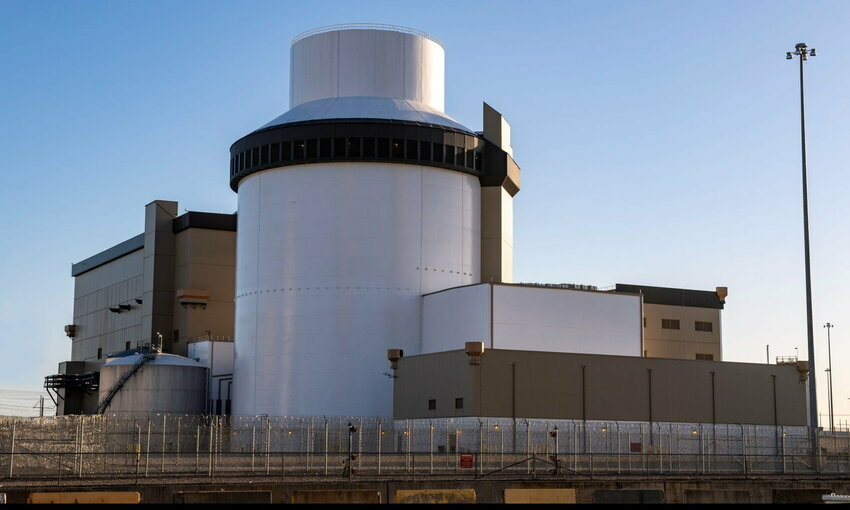 (Credit: Georgia Power)
(Credit: Georgia Power)One of the long-awaited Vogtle nuclear power units is now up and running in Georgia — a project that started in 2009 and came in $16 billion over budget. A second reactor will become operational between November 2023 and March 2024.
The units are on an existing site, started in the 1980s. Georgia Power’s Vogtle 3 can power up to a half-million homes and businesses with 1.1 gigawatts. Vogtle 4 will be a similar size. Once all four units are online, the plant will be the nation’s largest clean energy generator, becoming an economic magnet for Georgia.
While the plant is long overdue, it is a welcome addition to the nation’s electricity portfolio. The International Atomic Energy Agency said the use of nuclear energy must double by 2050 to keep temperature increases to no more than 1.5 degrees Celsius from pre-industrial levels. At present, 32 countries operate nuclear plants, and the fuel source makes up 10% of the global pie.
“The Plant Vogtle 3 & 4 nuclear expansion is another incredible example of how Georgia Power is building a reliable and resilient energy future for our state,” said Kim Greene, Georgia Power’s chief executive. “It is important that we make these kinds of long-term investments and see them through so we can continue providing clean, safe, reliable, and affordable energy to our 2.7 million customers. Today’s achievement is a testament to our commitment to doing just that, and it marks the first day of the next 60 to 80 years that Vogtle Unit 3 will serve our customers with clean, reliable energy.”
The United States has 93 nuclear power reactors in 28 states, generating nearly 96,000 megawatts — the world’s largest. The fuel source makes up 20% of the nation’s electricity portfolio.
Meanwhile, they provide 55% of this country’s carbon-free power. Those plants operate at a 92% capacity — more than all other competing energy sources. And nuclear power can keep the lights on during cold winters when bottlenecks may prevent the free flow of natural gas. At the same time, the industry says that its operating costs have fallen by 19% since 2012.
That’s why federal policy now favors carbon-free nuclear power. Furthermore, Connecticut, Illinois, Minnesota, New Jersey, New York, and Ohio have taken steps to ensure that nuclear plants in their states keep operating.
“The no-carbon future we need is seen as being powered by renewables,” says Mike Shatzkin, co-founder of ClimateChangeResources.org. “Nuclear energy, carbon capture, and batteries must have massive breakthroughs. But only nuclear can significantly complement renewables. Battery storage is measured in hours and carbon capture is nowhere near large-scale implementation. We need to be working on all three. Time is too tight. The consequences too dire.”
The nation’s existing nuclear reactors use second-generation light-water facilities, all operating near capacity. So-called third-generation light-water reactors have been built overseas and mainly in Asia. Fourth-generation reactors will follow, known as Very High Temperature Reactors.
The greater the temperature, the better the thermal efficiency and the potential for use in industrial applications and hydrogen production — making them more economically appealing. Furthermore, advocates say that the odds of leaks are near zero. But skeptics say that the Very High Temperature Reactors are unproven outside the labs and will thus have difficulty finding investors.
“One of the key advantages of advanced nuclear energy is that we think it can have lower costs,” says The Nuclear Innovation Alliance executive director Judi Greenwald. “It can also be built in smaller increments and matched with the growth in electricity demand. That makes it easier to finance.”
Analysts have long predicted a nuclear renaissance. And the passage last year of the Inflation Reduction Act may be the catalyst that brings it to fruition.
The law provides a production tax credit for existing nuclear energy units — similar to the ones received by wind and solar farms. That will keep those plants competitive, preventing their early retirement. Lenders and investors will now perk up because of those tax benefits.
But the industry will look differently, comprised of small modular reactors — not the jumbo-sized ones, which have been unable to meet their timetables or budgets. The smaller ones, assembled onsite, are cheaper to build, safer to operate, and could soon appear in North America.